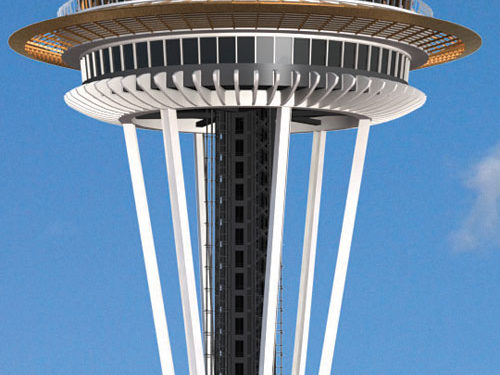Designer Spotlight: Henk Dawson

Henk Dawson works out of his home office in Seattle were he’s lived most of his life. He earned a degree in graphic design from the University of Washington more than 20 years ago. After a short stint at an ad agency doing desktop publishing, Henk discovered his love for 3D. He used the payment from his first 3D job to purchase the software he was using to graduate from demo mode.
Specializing in illustration and animation, Henk uses Adobe Photoshop, Illustrator, After Effects, Premier Pro, and Luxology’s modo for 3D rendering to create everything from photorealistic to conceptual illustrations. Since he started his business back in 1989, he has gained extensive experience creating visual assets for large corporations, ad agencies, design firms, and startups, including Microsoft, Apple, Crayola, and ESPN. He loves his work and his goal is to continue to stay small and focused on creating quality 3D illustration and animation.
Layers: You recently purchased a lot of digital photography equipment with the intent to integrate photography into your 3D illustrations. How is that working out for you?
Dawson: The new equipment has improved the quality of the photography that I do for my 3D work, mainly texture maps and background plates. I am, however, working at getting my skills to a level where my photography stands on its own.

Layers: We see photorealistic art all the time that was created in Photoshop that looks three-dimensional, but no 3D tools were used. Is there a difference between photorealistic art and 3D art?
Dawson: The final result can be the same but the creation process is different. A 3D program has a virtual 3D space with geometry, lights, and textures. Using Photoshop without the 3D tools is like painting on a flat canvas, but a skilled Photoshop artist can achieve a similar 3D result.
Layers: You’ve been working with 3D for quite some time now. How easy is it to work with today’s 3D apps? What do you think about the 3D capabilities in Photoshop CS5?

Dawson: 3D applications have come a long way. Today’s computers are fast enough to display real-time previews (for most things) and the user interfaces are friendlier than they used to be. Photoshop 3D is basic but powerful. You don’t need all the bells and whistles of a high-end 3D program to do sophisticated work.
Layers: These days, it seems like it’s not enough to be just a designer or just an illustrator. Do you think your skills in 3D and animation give you an edge over traditional artists trying to make it in today’s industry?
Dawson: Yes. I find it important to specialize. The good paying jobs are the ones that require a skill that’s in demand and difficult to learn. 3D animation fits that bill, and I would recommend it as a career. It can take many years to learn to do it well, but if you like it, it can be rewarding.

Layers: Can you tell us about your process for creating one of your 3D illustrations? How much Photoshop and Illustrator are involved?
Dawson: I spend more time in Illustrator and Photoshop building texture maps than I spend in modo, my 3D program. I also use After Effects and Premiere quite a bit. Most of my work is photorealism, so I generally build my 3D models directly from photographic reference. Occasionally, I get a more conceptual job and I’ll sketch it out in Photoshop using my Cintiq monitor.
Layers: You’ve taught at the School of Visual Arts in Seattle, and you’ve been a speaker and lecturer at many conferences and events. What types of questions do you receive at these events?
Dawson: I get asked what software I use. I use modo for 3D and Adobe’s Creative Suite Master Collection. Also, I get asked how do you build a creative career. I think that it’s important to balance practicality with passion. It’s practical to take jobs that pay the bills but it’s also important to do work that you’re passionate about. You’ll starve or get burned out if you’re too passionate or too practical.

CONTACT Henk Dawson www.d3d.com
ALL IMAGES BY HENK DAWSON


